Dubai International Airport Nears Capacity Limits, CEO Reveals Expansion Challenges
Abhishek Nayar
04 Oct 2023

Dubai International Airport (DXB), one of the world's busiest and most prominent airports, is approaching its capacity threshold. Paul Griffiths, CEO of Dubai Airports, recently discussed the airport's future prospects and expansion plans during the World Aviation Festival 2023.
With a history of remarkable growth, Dubai's aviation industry has faced unprecedented challenges in the wake of the COVID-19 pandemic. However, the city's swift recovery and changing passenger dynamics have prompted a reevaluation of DXB's potential.
Unwavering Growth Trajectory
DXB has been on a remarkable growth journey, and despite hitting impressive passenger numbers in the past, the airport continues to push boundaries. In August 2023, Griffiths announced a H1 2023 passenger forecast of 85 million, a mere 1.6% below DXB's annual traffic in 2019. However, he now believes DXB can reach its 2018 record of 89 million passengers. The optimism stems from the airport's resilience and the city of Dubai's swift recovery from the pandemic's impacts.
A Swift Recovery from the Pandemic
One of the key factors contributing to the quick recovery of Dubai's airports, according to Griffiths, is the city's ability to rebound swiftly from the impact of the COVID-19 pandemic. Dubai's status as a global business and tourism hub, coupled with effective health measures, played a crucial role in restoring passenger confidence.
Before the pandemic, Dubai Airport saw approximately 60% of transfer passengers and 40% of point-to-point travelers. However, this dynamic has reversed, with 60% now being point-to-point traffic. Griffiths believes this trend may continue but expects a more balanced distribution of passengers once more capacity comes online and international markets, particularly in Asia, open up further.
Expansion Prospects and Technological Advancements
While Griffiths acknowledges that DXB still has room for growth, he emphasizes that this growth is finite. He estimates that DXB has the potential to unlock another 20 million passenger capacity. To achieve this, the airport has been investing in increasing passenger throughput, enabling travelers to move through the airport more efficiently.
Griffiths also highlights the importance of technology investments over new physical infrastructure. By doubling the throughput with the same infrastructure, DXB can effectively double its capacity, making it a cost-effective approach, especially in a constrained site like DXB.
Future Investments and DWC's Phase 2
Griffiths anticipates that Dubai Airports will fully utilize all available capacity at DXB by the middle of the next decade. As a forward-looking measure, the company is considering the development of a completely new passenger-focused airport as part of the Dubai World Central (DWC) Phase 2 project. Currently, DWC primarily serves cargo flights.
While DXB maintains its competitive edge over airports in neighboring countries like Saudi Arabia, Qatar, and Turkey, Griffiths emphasizes the need to keep an eye on developments in these regions. He believes that Dubai's advantage lies in its commitment to providing exceptional service quality to passengers, a reputation that has earned several prestigious awards for Dubai Airports. The CEO also emphasizes that understanding and exceeding passenger expectations are critical elements in staying ahead.
Griffiths, who is also a musician, stated that “there are more parallels between music and running an airport than most people realize”.
“If you are part of an orchestra or you are directing, you are trying to bring together many discrete component parts, each of which has their own orientation and you are trying to get them to work in harmony,” he concluded.
Conclusion
As Dubai International Airport approaches its capacity threshold, CEO Paul Griffiths remains optimistic about its future. The city's ability to bounce back from the challenges of the COVID-19 pandemic, coupled with strategic investments in technology and infrastructure, positions DXB for continued growth.
Moreover, the possibility of a new passenger-centric airport through DWC's Phase 2 project underscores Dubai's commitment to maintaining its status as a global aviation leader. As Dubai's airports look to the future, providing exceptional passenger experiences and staying ahead of the competition remain at the forefront of their priorities, ensuring that Dubai's aviation industry continues to soar to new heights.
Read next
United Airlines' Massive Aircraft Order Signals Global Expansion Ambitions
Abhishek Nayar
04 Oct 2023
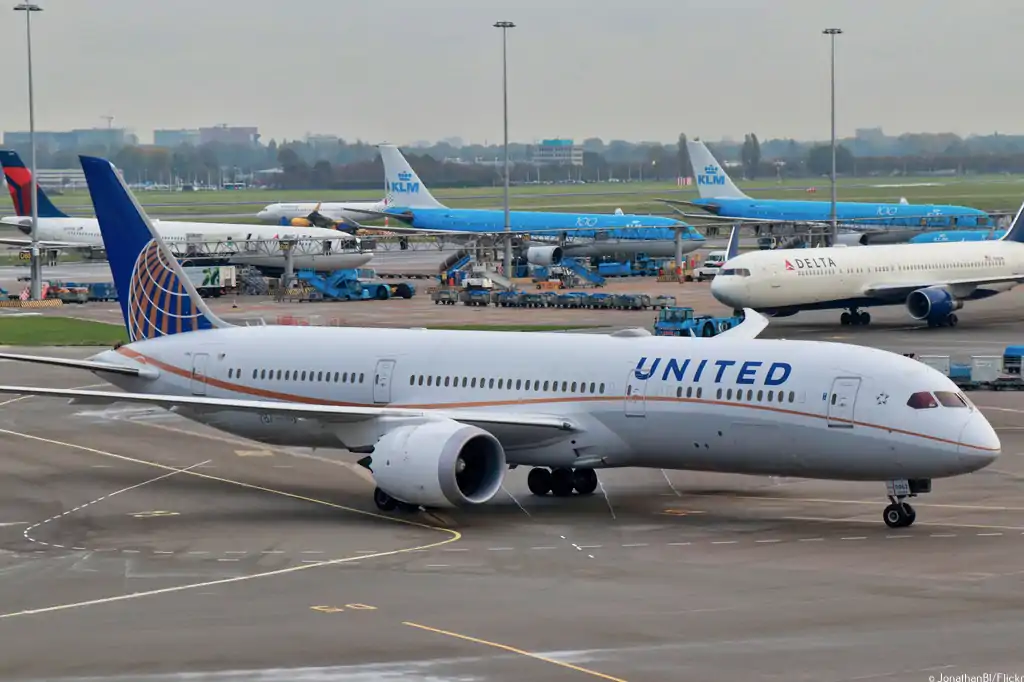
United Airlines announced a significant aircraft order on October 3, 2023, in a strategic move aimed at expanding its international network and addressing supply-chain bottlenecks. This order underscores the airline's commitment to enhancing its global reach and strengthening its position in the competitive aviation industry.
The Aircraft Order
United Airlines has placed an order for a total of 110 aircraft from two major aircraft manufacturers, Boeing and Airbus. These new additions to their fleet are scheduled for delivery beginning in 2028, marking a substantial investment in the airline's future growth. The order comprises 50 Boeing 787-9 Dreamliners with delivery dates spanning from 2028 to 2031 and 60 Airbus A321neos scheduled for delivery between 2028 and 2030.
In addition to these firm contracts, United has secured options for up to 50 additional Boeing 787s and purchase rights for another 40 Airbus A321neo aircraft towards the end of the decade. These options provide flexibility for further expansion should market conditions and demand warrant it.
Reasons Behind the Order
One of the key motivations behind this significant aircraft order is to address the ongoing supply-chain challenges that have delayed aircraft deliveries. United Airlines, like many other carriers, has faced disruptions due to these bottlenecks, which have, in turn, impacted its flight operations.
Furthermore, infrastructure difficulties, including runway, airspace, and gate capacity constraints at major airports, have led to a reduction in flights. To mitigate these issues, United plans to deploy larger aircraft with more seats, expecting that average seats per departure in North America will grow by 40% in 2027 compared to pre-pandemic levels.
Expanding International Reach
United Airlines places a strong emphasis on higher-margin international travel, which currently accounts for approximately 39% of its passenger revenue. This is a significant increase from the pre-pandemic period, highlighting the airline's commitment to global expansion.
According to United Chief Commercial Officer Andrew Nocella, the airline anticipates that global long-haul flying will play a vital role in its growth strategy in the second half of this decade. This move aligns with the recent trend of airlines focusing on long-distance widebody aircraft to accommodate the rising demand for international travel.
United's Aircraft Strategy
This order represents United Airlines' second major aircraft acquisition in the past year. In December, the airline announced a substantial order for 100 Boeing 787 Dreamliners and 100 737 MAXs. The company's commitment to the Boeing 787 Dreamliner family reflects confidence in its operating economics and reliability.
The Airbus A321neo, known for its fuel efficiency, smaller carbon footprint, and lower maintenance and operating expenses, is expected to be a "game changer" for United Airlines, according to Airbus Chief Commercial Officer Christian Scherer.
Challenges and Outlook
While United Airlines is bullish on its long-term prospects, the timing of this significant order has raised questions about the future of the airline's outstanding contracts for 45 Airbus A350s, which have already been deferred to at least 2030. Nocella clarified that the A350 remains a valuable asset, but the airline is currently focused on its growing 787 fleet, intending to deploy these aircraft on routes currently served by Boeing's 767.
Analysts have raised concerns about the airline industry's pricing power and the potential impact of economic downturns on travel demand. However, Nocella downplayed these concerns, stating that United's investors can have confidence in the airline's commitment to achieving long-term profit margin goals.
Conclusion
In summary, United Airlines' substantial aircraft order underscores its determination to expand its global network, address supply-chain challenges, and enhance its position in the industry. With an eye on long-haul international travel, the airline is poised for growth in the coming decade, leveraging a diverse and modern fleet to meet evolving passenger demands.
With Inputs from Reuters
Read next
Scandinavian Airlines System (SAS), the largest carrier in Scandinavia, has unveiled a new ownership structure following its successful emergence from bankruptcy proceedings.
On Tuesday, October 3, 2023, SAS announced that US investment firm Castlelake, Air France-KLM, and the Danish state would become key shareholders in the airline. This significant development comes after years of financial struggle, exacerbated by the COVID-19 pandemic, which led to SAS filing for bankruptcy protection in the United States in mid-2022.
New Ownership Distribution
The restructuring of SAS's ownership sees Castlelake taking a substantial 32% stake in the company, making it the largest shareholder. Air France-KLM will control approximately 20% of the airline, and the Danish state will retain a significant ownership stake of around 26%. Additionally, Lind Invest, a Danish investment firm, will continue to hold 8.6% of equity in SAS.
Financial Injection
The total investment injected into the reorganized SAS amounts to 12.9 billion Swedish crowns, which translates to approximately $1.16 billion. This financial infusion is a crucial component of SAS's transformation plan, designed to provide the airline with a solid financial foundation for future growth.
Air France-KLM's Investment
Air France-KLM has committed to investing $144.5 million in SAS. Of this amount, $109.5 million will be allocated to common shares, while $35 million will be directed towards secured convertible bonds. Importantly, Air France-KLM has indicated its intention to potentially expand its shareholding to gain control after a minimum of two years, contingent upon regulatory conditions and the airline's financial performance.
SAS's Long Struggle
SAS has faced significant challenges for over a decade, as it sought to compete with low-cost rivals in Europe's highly competitive aviation market. Despite once being named the world's best airline in the 1980s, the company struggled with high expenses and reduced demand from travelers, particularly during the COVID-19 pandemic.
Future Prospects
The entrance of Castlelake and Air France-KLM as major shareholders is expected to provide SAS with the necessary resources and strategic backing to navigate the complex and ever-changing aviation landscape. This influx of capital will enable SAS to execute its transformation plan and position the airline for a brighter future.
Apollo Global Management's Aspirations
Notably, Apollo Global Management, a US-based private equity firm, has expressed interest in acquiring a controlling share in SAS, according to Reuters. The evolving ownership landscape of SAS may continue to attract attention from potential investors and partners, further shaping the airline's future direction.
Conclusion
The announcement of new key shareholders and a substantial financial infusion marks a turning point for Scandinavian Airlines System. As the airline emerges from bankruptcy proceedings with renewed vigor, the partnership with Castlelake and Air France-KLM, alongside continued support from the Danish state and Lind Invest, sets the stage for SAS to embark on a path of recovery and growth in the competitive aviation industry. The coming years will be instrumental in determining the success of SAS's transformation and its ability to regain its former status as a leading player in the European aviation market.
Read next
Boeing plans to push production of its bestselling 737 narrowbody jet to a record of at least 57 per month by July 2025, reflecting rising orders and the company's recovery after the 737 MAX crisis, according to two sources quoted by Reuters. The goal would hit the planemaker's unmet target from several years ago, which was scuttled in 2019 when the MAX was grounded globally following two deadly plane crashes.
Both Boeing and its European rival Airbus have laid out ambitious ramp-up goals as air travel and aircraft sales rebound, with Airbus producing in-demand single-aisle planes even faster than the U.S. planemaker.
Boeing laid out the plan in the latest version of its master schedule for suppliers, which was reaffirmed by the planemaker in mid-September, the sources told Reuters on condition of anonymity because the document is not public.
The schedule targets 737 production to reach 42 jets a month by December 2023, affirming statements made by Boeing Commercial Airplanes head Stan Deal to Bloomberg TV in June. From there, monthly 737 production - which includes the 737 MAX as well as earlier models used for military planes - is set to grow to 47.2 jets in June 2024 and 52.5 jets in December 2024 before hitting a steady rate of 57.7 aircraft per month in July 2025.
An earlier version of the plan, which Reuters reported in April, had seen 52 jets per month production a month later, in January 2025. Before the 2019 grounding of the 737 MAX, Boeing was producing 52 737s a month on its way to a target of 57. Boeing's formal 737 production target is 50 per month for the 2025-2026 timeframe, unveiled by the company last November during an investor day.
But Boeing CEO Dave Calhoun telegraphed a rate increase to 60 jets a month could be on the table as the company racks up orders, such as a deal with Air India for almost 200 MAXs booked this year. "I would love to get to 60 deliveries and the market is there for it. There's no doubt about it," Calhoun said in a July earnings call.
The Boeing CEO added the second half of 2024 would be a key moment for the company to prove it could keep its supply chain stable and maintain its ramp-up plan. "If we get through that well and we execute well, then we'll be talking to all of you about 60 deliveries," Calhoun said at the time. "But I don't want to get ahead of myself."
It is not uncommon for supplier schedules to change based on numerous factors, but it is an important signal to the supply chain that allows smaller companies to make necessary investments, the sources said.
Airbus in July reaffirmed a widely watched production goal for its best-selling A320neo family jets of 75 a month in 2026, with executives stating it was "progressing well."
Manufacturing Defect in B737 MAX
Boeing has recently identified a new 737 MAX quality problem involving supplier Spirit AeroSystems that has resulted in improperly drilled holes on the aft pressure bulkhead. Boeing said the defect will delay near-term deliveries and the company is evaluating whether it could cause it to miss its annual delivery target of at least 400 737s this year.
Boeing shares were down 2.7% and Spirit shares fell 6.1% in after-hours trading. It is the second year that Boeing's delivery targets are under review after supply-chain issues forced it to temper its goal last year. The latest quality issue is due to improperly shaped holes in the aft pressure bulkhead of some planes. The bulkhead is a structure that seals off the rear of the pressurized cabin. The parts in question were made by Spirit, whose shares were down 6% in premarket trading. However, not all 737 fuselages will be impacted as Spirit uses multiple suppliers for the aft pressure bulkhead.
The new supply-chain snag is the latest issue to impede deliveries of the cash-generating MAX following Boeing's disclosure of a problem in April that Spirit had improperly installed brackets joining the aft fuselage to the vertical tail.
The manufacturing glitch will cause some near-term 737 delivery delays, including snarling a plane going to the Malaysian Airline System, as Boeing conducts inspections and determines how many models were affected and what work they need, according to the company.
Boeing is evaluating whether it will be able to reach its target of delivering 400 to 450 of the 737-family jets this year. The uncertainty underscores the strain on planemakers Boeing and Airbus, and their global network of suppliers, as they accelerate manufacturing while contending with parts shortages and workforce turnover. The planemaker's ratio of enterprise value to sales for the next 12 months is 2, compared to 1.3 for rival Airbus, as per Refinitiv data. A low ratio implies a more attractive investment opportunity.
(With Inputs from Reuters)
Read next
DGCA Plans to Bar Pilots & Crew From Using Perfumes During the Breathalyzer Test
Radhika Bansal
03 Oct 2023
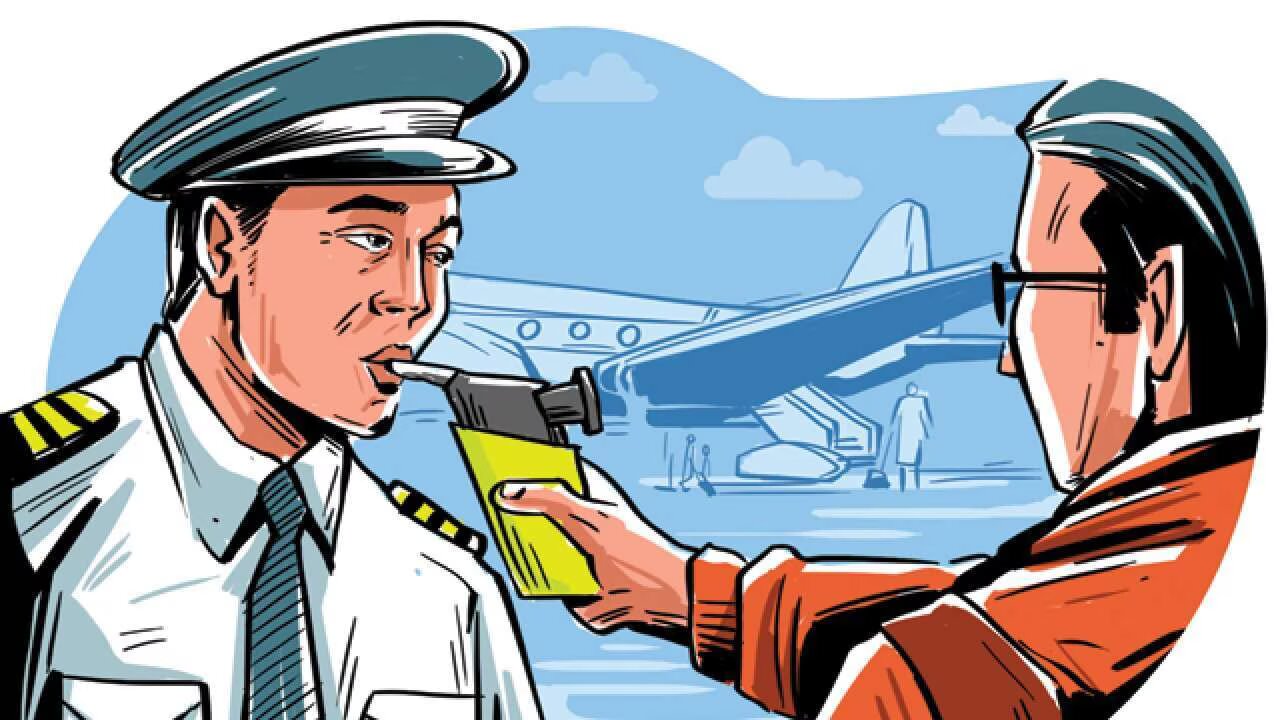
Civil aviation regulator DGCA has proposed a draft that may bar pilots and crew from using perfumes during the breathalyzer test. The Directorate General of Civil Aviation (DGCA) has come up with the draft since perfumes generally have a high alcohol content and can affect the breathalyzer test.
"No crew member shall consume any medicine/formulation or use any substance such as mouthwash/tooth gel/perfume or any product containing alcohol which may result in a positive breathalyzer test. Any crew member who is undergoing such medication shall consult the company doctor before undertaking a flying assignment," the draft, accessed by news agency ANI, read. "This is only a draft CAR (Civil Aviation Requirements) put in the public domain for stakeholder comments," the DGCA chief said.
Airlines in India and DGCA are very strict about breathalyzer tests before any operation and the tests are always done under camera surveillance.
The Directorate General of Civil Aviation (DGCA) has put forth this draft because perfumes typically contain a significant amount of alcohol, which could potentially impact the accuracy of the breathalyzer test.
Importance of pre-flight Breathalyzer Test
The pre-flight breathalyzer assessment occurs at the departure airport. By DGCA regulations, if a crew member tests positive, they have the option to undergo a second test using either the same equipment or different equipment. The time interval between the first and second tests must not exceed 20 to 25 minutes. During this period, individuals undergoing testing are permitted to wash their faces or rinse their mouths if they choose to do so. No crew member shall take any medication or composition, or use any substance, including mouthwash, tooth gel, perfume, or any alcohol-containing product that could cause a breathalyser test to be positive. Before accepting a flying assignment, any crew member who is taking such medicine must consult the corporate doctor.
The other changes proposed by the DGCA in its draft rule include: “Before each test, the Doctor/Paramedics/EMT shall obtain a reading of 0.000 on the instrument. The Doctor/Paramedics/EMT shall also carry out a control test daily and keep a record of printouts to ensure the serviceability of both the BA equipment and the printer…. If the BA examination result is positive, a repeat test shall be carried out after an interval of maximum 20-25 minutes”.
It is important to note here that over the years, flight crew members and pilots have voiced concerns about failing the breathalyzer test due to the presence of after-shave lotions, mouthwash, or perfumes. Under the existing regulations, if a crew member fails the breathalyzer test once, their license will be suspended for three months. In the event of a second failure, the suspension period may extend to three years. A third instance of failing to pass the test will result in the suspension of the license.
The DGCA also mandates a 12-hour gap between flying an aircraft and ingesting alcohol. Pilots who fail the alcohol test for the first time are prohibited from flying for three months; those who fail it again are prohibited from flying for three years; and those who fail it three times in a row have their licence permanently revoked.
The DGCA claims that a few common products could result in a false-positive test. The rule change may therefore close a legal gap that crew members were using to avoid having their licence suspended. In the aviation sector throughout the world, pilot intoxication has occasionally been a concern. After testing positive for alcohol last year, 116 members of the cabin crew and 41 Indian pilots had their licences temporarily suspended.
The air safety guidelines with specific regard to alcohol consumption first issued in 2015 and amended from time to time say that even when the blood alcohol levels are zero in the body, there could be some effect of hangover, which is mainly due to congeners.
“These congeners may take 15 to 18 hours to get dissipated and may produce ill effects for up to 36 hours depending upon the amount of alcohol consumed. Even 12 hours after a bout of drink, when the blood alcohol level remains zero, there is a decrement in task performance. Alcohol present in the body even in small quantities jeopardises flight safety on several counts and is likely to adversely affect an aviator well into the hangover period,” Section 5 of CAR says.
A new amendment proposed is to advise aircraft operators to make available at least two serviceable fuel-cell technology-based breath analysers capable of giving accurate digital value up to three decimal places with a memory to store at least the last 1,000 records.
Read next
Why are Flight Levels Odd and Even, and How It Differs in Different Parts of the World
Abhishek Nayar
03 Oct 2023
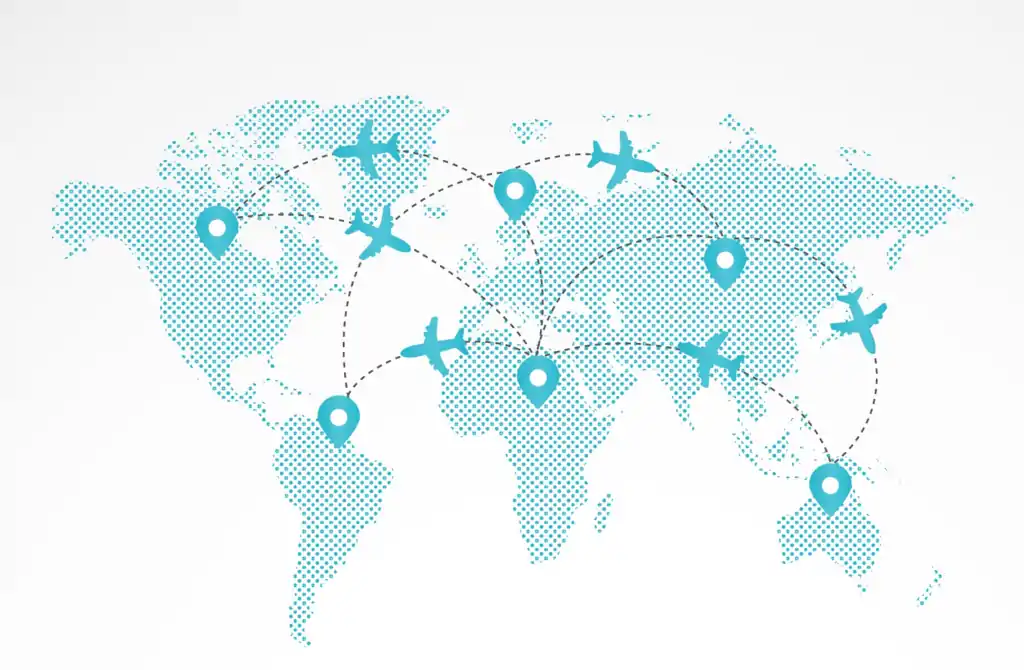
Aviation is a complex and highly regulated field, and one crucial aspect of ensuring safe and efficient air travel is the measurement of altitude. In aviation, altitude is not always what it seems, and flight levels (FL) play a significant role in this regard.
The History of Flight Levels
Flight levels are a standardized way of expressing an aircraft's altitude in the aviation industry. They are based on a reference point of standard air pressure at sea level, which is 1013.25 hPa (hectopascals) or 29.92 inHg (inches of mercury). This standardization helps ensure safe vertical separation between aircraft, regardless of natural variations in atmospheric pressure.
Historically, altitude was measured using a pressure altimeter, which operates as a calibrated barometer. These altimeters measured the ambient air pressure and calculated the corresponding altitude. However, if different aircraft's altimeters were not consistently calibrated, it could lead to two aircraft flying at the same altitude, even though their altimeters indicated different values. Flight levels solve this issue by defining altitudes based on a standard air pressure at sea level, ensuring that all aircraft operating on flight levels calibrate to this standard.
To determine the true altitude above sea level, a pilot would need to calibrate the altimeter according to the local air pressure at sea level, considering natural variations in pressure over time and across different regions.
Transition Altitude and Transition Level
The transition altitude (TA) is a critical concept in aviation. It is the altitude above sea level at which aircraft transition from using local barometric-derived altitudes to flight levels. Below the transition altitude, aircraft altimeters display altitude above sea level. Above the transition altitude, altimeters are adjusted to the standard pressure setting of 1013.25 hPa (29.92 inHg), and aircraft altitude is expressed in flight levels.
The transition level (TL) is the lowest flight level above the transition altitude. When descending below the transition level, pilots switch to referencing the aircraft's altitude by setting the altimeter to the local QNH (barometric pressure adjusted to sea level) for the region or airfield.
The transition layer (TLYR) is the airspace situated between the transition altitude and the transition level. In simple terms, the relationship between these concepts can be summarized as follows: TL = TA + TLYR.
"East is Odd, West is Even Odder"
To ensure vertical separation between aircraft, a mnemonic known as "East is Odd, West is Even Odder" is used in aviation. This rule applies to both visual and instrument flight rules and is based on the magnetic headings of zero to 179 degrees (East) and 180 to 359 degrees (West).
- Eastbound flights (magnetic track 000 to 179°) maintain odd-numbered flight levels, such as FL330 or FL350, in increments of 2,000 feet.
- Westbound flights (magnetic track 180 to 359°) maintain even-numbered flight levels, such as FL320 or FL340, also in increments of 2,000 feet.
This system ensures that aircraft flying in opposite directions are vertically separated. Modern systems allow planes to pass with as little as 1,000 feet of vertical separation.
The Semicircular Rule (Hemispheric Rule)
The semicircular rule, also known as the hemispheric rule, applies to IFR (Instrument Flight Rules) flights in most regions worldwide. It defines altitude separation based on the aircraft's magnetic track.
- Eastbound flights (magnetic track 000 to 179°) at or below FL290 maintain odd thousands (FL250, FL270, etc.).
- Westbound flights (magnetic track 180 to 359°) at or below FL290 maintain even thousands (FL260, FL280, etc.).
However, above FL290, when Reduced Vertical Separation Minima (RVSM) is not in use, the separation interval increases to 4,000 feet, and only odd flight levels are assigned regardless of the direction of flight.
- Eastbound flights (magnetic track 000 to 179°) above FL290 maintain odd flight levels (FL290, FL330, FL370, etc.).
- Westbound flights (magnetic track 180 to 359°) above FL290 also maintain odd flight levels (FL310, FL350, FL390, etc.).
RVSM-equipped aircraft continue to operate with a 2,000-foot separation interval, as outlined in the semicircular rules. Both non-RVSM and RVSM-equipped aircraft maintain a separation of 4,000 feet above FL410.
It's worth noting that some countries with north/south-oriented major airways have their own variations of the semicircular rule, defining altitude assignments based on north/south tracks.
Reduced Vertical Separation Minima (RVSM)
RVSM is a crucial advancement in aviation that has allowed for reduced vertical separation between FL290 and FL410. This change enables aircraft to fly more efficient routes, save fuel, and increase airspace capacity. However, only aircraft that have been certified to meet RVSM standards are permitted to operate in RVSM airspace.
The RVSM altitude assignments are as follows:
- Track 000 to 179°: Odd thousands (FL290, FL310, FL330, etc.)
- Track 180 to 359°: Even thousands (FL300, FL320, FL340, etc.)
Above FL410, a 4,000-foot separation interval resumes, and only odd flight levels are assigned based on the direction of flight.
- Track 000 to 179°: Odd flight levels (FL410, FL450, FL490, etc.)
- Track 180 to 359°: Odd flight levels (FL430, FL470, FL510, etc.)
RVSM has greatly improved airspace efficiency and has been implemented in many parts of the world to enhance the safety and capacity of air travel.
Conclusion
Understanding flight levels, transition altitudes, and the rules governing altitude assignments is essential for safe and efficient air travel. These standardized procedures and regulations help ensure that aircraft remain properly separated both vertically and horizontally, contributing to the overall safety and reliability of the aviation industry. As technology continues to advance, aviation practices and regulations will evolve to meet the demands of a growing and increasingly interconnected global aviation network.
With Inputs from IVAO, The Points Guy

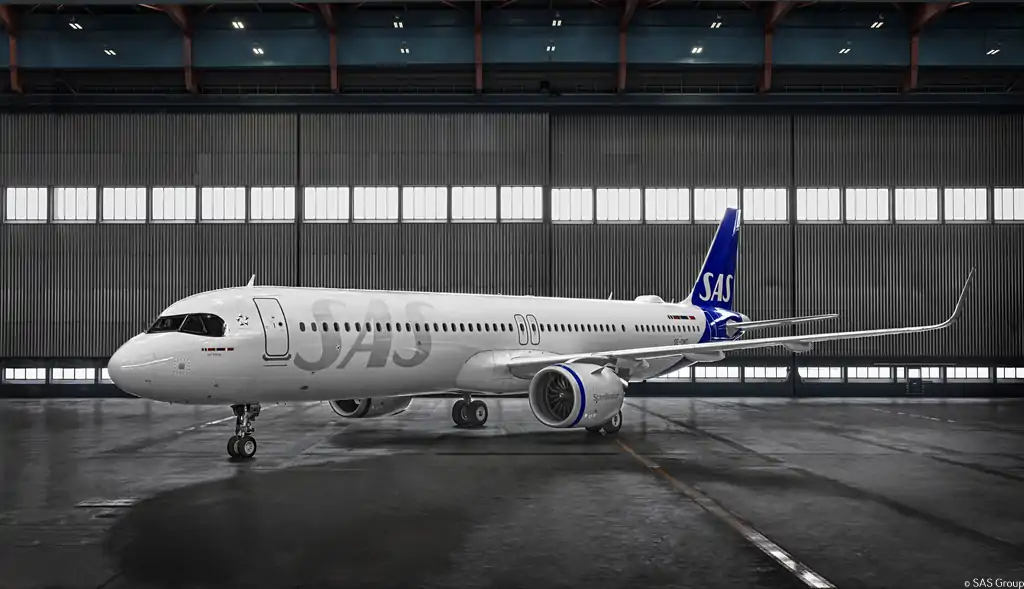

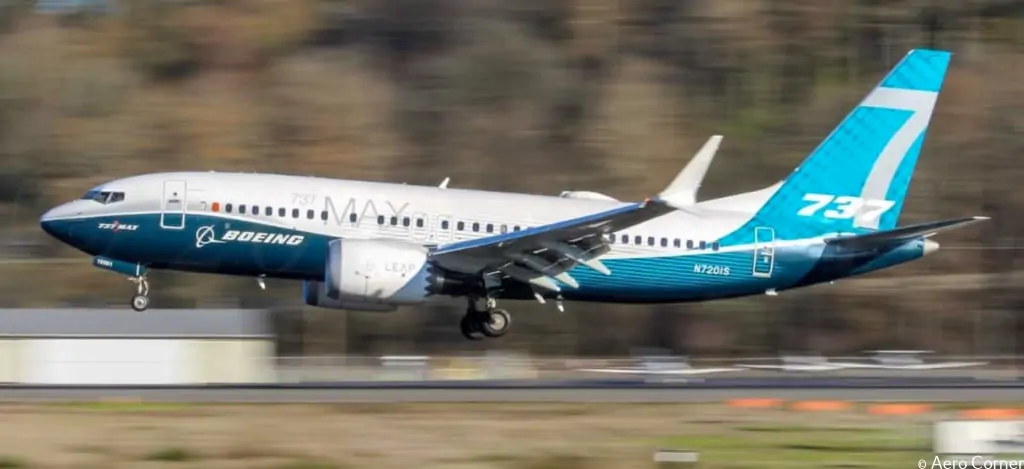
Comment